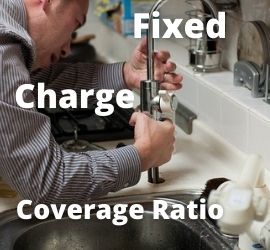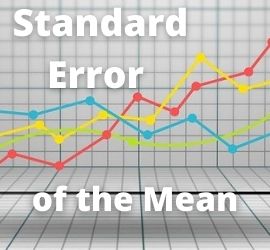What Is the Run Rate?
 The run rate is a company’s financial performance based on current financial data as a prediction of future performance. It is an extrapolation of current financial performance that assumes present conditions will persist. Sometimes, the term is used to refer to the average yearly dilution from stock option grants by the corporation during the most recent three-year period as reported in the annual report.
The run rate is a company’s financial performance based on current financial data as a prediction of future performance. It is an extrapolation of current financial performance that assumes present conditions will persist. Sometimes, the term is used to refer to the average yearly dilution from stock option grants by the corporation during the most recent three-year period as reported in the annual report.
The run rate of a corporation is the predicted financial performance based on its limited current financial data. For example, using January’s financials, a firm made $200,000 in revenue for the month. Therefore, it may project a run rate generating year-end total revenue of $2.4 million. The run rate can assist in estimating a company’s future performance. However, it can also be deceptive if financial data is seasonal or changes dramatically from period to period. As a result, there are occasions when using the run rate offers useful information and other times when it is irrelevant.
Run Rate – A Closer Look
The run rate takes current performance information and extends it over a longer period. For example, consider a firm that reports $200 million in revenue in the most recent quarter. The CEO may inform the Board of Directors that the company is operating at an $800 million run rate. This is extrapolated from the most recent quarter’s revenue. Annualizing is the practice of using shorter timeline data to develop a yearlong prediction for possible performance.
A run rate can be useful in developing performance predictions for organizations operating for a short time. For example, less than a year or as newly established divisions or profit centers. This is especially true for a company that may be reporting its first profitable quarter. Furthermore, the run rate can be useful in circumstances where a basic business function was altered in some way. Changing strategies can have an impact on future performance until operations mature and stabilize.
Caution When Using the Run Rate
The run rate can be a deceptive measure, particularly in seasonal sectors. For example, consider a store analyzing earnings following the winter holiday season. This is a period when many businesses see increased sales volumes. Estimates of future performance may be inadvertently overstated. Particularly when information based on holiday season sales is utilized and extrapolated forward. Furthermore, the run rate is often based primarily on the most recent data. This may not adequately correct for situational changes, resulting in an erroneous overall image.
For example, technological companies often see an increase in revenue when a new product is released. Using just data from the period shortly following a major product launch may result in biased statistics. Furthermore, run rates do not take into consideration significant, one-time sales. For instance, if a manufacturer receives a large contract that is paid for in advance. This might lead sales figures to be abnormally high for one reporting period based on this exceptional transaction.
How To Calculate Run Rate
The run rate in finance extrapolates a firm’s present performance to estimate future performance. Of course, this is under the premise that current conditions will prevail. The estimates are normally extrapolated for a complete year. Therefore, this technique is frequently referred to as annualizing the figures. To determine a company’s run rate, just divide the company’s revenue in a particular time period by the number of days in that period. The yearly run rate is calculated by multiplying that value by 365.
Annualized Run Rate = (Revenue for the period / Days in the period) x 365
For example, if CompUCorp had revenue of $3,600,000 in the first two quarters of the year, you could divide that by the number of days (3,600,000 / 180 = 20,000). Then, multiply that by 365 for the annualized rate of $7,300,000.
You can also calculate the run rate by taking the current revenue for one month and multiplying it by 12. If the results are released quarterly, to annualize one would simply multiply by 4.
- To annualize monthly data – 1 month of revenue x 12 months
- To annualize quarterly data – 1 quarter of revenue x 4 quarters
For example, if CompUCorp had revenue of $500,000 in January, simply multiply that number by 12 to get the annual run rate of $6 million. If quarterly revenue was reported as $1.5 million, multiply the quarterly number by 4 to get an annual rate of $6.0 million.
Using a Run Rate – Advantages and Disadvantages
As part of the budgeting process, a run rate can be used to extrapolate current outcomes into future periods. This works well in an operational environment that does not vary much from one period to the next. However, the run rate may be a deceptive indicator, particularly in a seasonal business. In that case, forecasts of future performance may be overstated. Furthermore, it is often based primarily on the most recent data. But, it may fail to adequately capture volatility. Unfortunately, it would result in an erroneous overall image in that instance. Furthermore, run rates do not take major, one-time occurrences into account, which might also bias estimates.
Pros
- Useful for start-ups – This information may be valuable for startup businesses or companies with no track record of earnings. Start-ups have limited information with which to generate estimates and financial forecasts. The run rate might be a good starting point for predicting how a firm will perform in the future.
- Forecasting – Using a run rate can be useful for forecasting long-term sales contracts or new products. Long-term contracts for products improve the accuracy of a run rate. This is because contracts provide predictability to expected future revenues. Also, new products have no previous data to draw on, so a run rate is the best available measure for estimating sales.
Cons
- Seasonal volatility – Companies with seasonal income may find it unreliable. When sales change from month to month, seasonal revenue means that annualized figures will be misleading. Assume a winter sports gear firm conducts more business in the winter than in the summer. You wouldn’t be able to compute the business’s run rate using sales figures from a high-producing month or quarter. Sales are highest during the winter months and an annualized rate is most likely overstated. Conversely, using sales figures from a warmer month or quarter will result in an understated annualized rate.
- One-off or discontinued products – An annualized rate is irrelevant for projecting one-time product sales. Consider a corporation offering a product for a limited period with no plans to sell that product again the following year. An annualized rate is meaningless because the product will not exist in the future.
Up Next: TTM Meaning in Finance – Trailing Twelve Months
 TTM Meaning: In finance, TTM refers to the trailing twelve months of financial data starting with the current period and going back twelve consecutive months. Using trailing twelve-month (TTM) financial numbers is an efficient method of evaluating the most current financial data in an annualized format. Annualized data is effective because it helps to mitigate the impacts of seasonality. Also, it lessens the impact of non-recurring anomalies in financial performance. For example, transient fluctuations in demand, spending, or cash flow. TTM allows analysts to assess the most current monthly or quarterly data rather than older data that comprises entire fiscal or calendar year information. TTM charts tend to be more effective for forecasting rather than trying to spot short-term changes.
TTM Meaning: In finance, TTM refers to the trailing twelve months of financial data starting with the current period and going back twelve consecutive months. Using trailing twelve-month (TTM) financial numbers is an efficient method of evaluating the most current financial data in an annualized format. Annualized data is effective because it helps to mitigate the impacts of seasonality. Also, it lessens the impact of non-recurring anomalies in financial performance. For example, transient fluctuations in demand, spending, or cash flow. TTM allows analysts to assess the most current monthly or quarterly data rather than older data that comprises entire fiscal or calendar year information. TTM charts tend to be more effective for forecasting rather than trying to spot short-term changes.
A TTM period is often defined as the 12 months before the current month. Or, the 12-month period ending with the firm’s most recent earnings report or other financial disclosure. Consider TTM data to be a 12-month yardstick used by firms and financial analysts to gauge recent performance. This is as opposed to a company’s fiscal year, current calendar year, or year-to-date (YTD) measure. TTM is a versatile tool. It may be used to analyze balance sheet numbers, profit and loss accounts, revenue, and cash flow charts. Just keep in mind that the 12-month period referred to by any particular TTM data varies from financial statement to financial statement.




